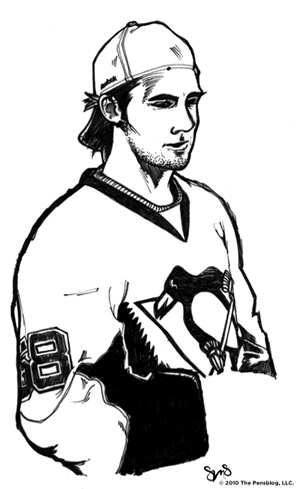It’s not often that a single three-game series encapsulates all the good and bad that’s befallen a team in a season. You get some instances where all the bad emerges—see: the Yankees series—and others where it’s nothing but good—see: the Detroit series—but rarely do you get both extremes. An even rarer bird is the series that’s a microcosm of both teams’ seasons, but with the Oakland A’s in town perhaps the Angels should have expected as much.
The story of the good Angels season has been one of strong starting pitching paired with just enough offense to squeak by. That was the story of the first two games, as Albert Pujols continued to power the offense while (surprise!) Hector Santiago and C.J. Wilson turned in solid outings. On the A’s side, the same two games magnified their bullpen troubles, struggles against lefties, and seeming inability to come out ahead in one-run contests (10–33 since they traded Cespedes!). Then the final game flipped the script. Sonny Gray did his thing and the A’s offense erupted, giving Oakland its 13th(!!) blowout win of the season and maintaining that weird, unhelpful run distribution thing they’ve had going since last summer. Meanwhile, the Halos flopped all over the field, destroying any and all positive vibes the first two wins might have created and raising the weekly question of whether this team even deserves to be in the playoff contention conversation. Naturally, all the good and bad was interspersed with terrible decisions by the Angels on the basepaths, which seems to be this season’s running theme. (Pun intended.)
Sunday’s bad was so bad it almost makes one forget that the club sits just 3.5 games back of the Astros, who are simultaneously crashing back to earth with a vengeance and making a mockery of every expert’s preseason favorite, the Mariners. With still a month left until the All-Star break, the Angels have a very real chance of catching Houston (and Texas) before the season’s de facto mid-way point. Whether or not they do depends on which team—i.e. good or bad—shows up to the park more frequently. At this point, I still couldn’t tell you which to expect.
Boxscore Breakdowns
Series Takeaways
1) It Might Be Time to Let Taylor Featherston Go
I like Taylor Featherston. I think that his defense is strong and, with proper development time, his bat might be too. Right now, though, I just don’t see what he’s bringing to the Angels other than an inability to be flexible with the back end of their roster. Whenever the club has had to make a depth move this season, it’s always come at the expense of another place of need. In their latest move, for instance, the Angels brought up Daniel Robertson to add an outfielder who can play center while Collin Cowgill is out, but had to option C.J. Cron back to Triple-A in order to do it.
Now, I don’t think losing Cron specifically off the bench is a huge deal. However, I think that all of these moves needing to be of the either/or variety because of Featherston’s immovable Rule 5 roster spot is an issue. If the Angels had the ability to send their utility back and forth between the minors and majors, then there would be no decisions about whether they needed a fifth outfielder or a power bench bat more. They could easily carry both. With Featherston, though, the Angels are hamstrung in what they can do with their bench.
I’d probably be cool with keeping Featherston around if there was some upside to him beyond “future utility infielder,” but that doesn’t seem to be the case. There are a bunch of guys out there with marginal hit tools and adequate gloves, so why carry one who artificially limits your roster flexibility?
With a strikeout in his lone series appearance Sunday, Featherston’s slash line dropped to .091/.139/.152 on the season. I don’t care if you’re the second coming of Ozzie Smith, a .291 OPS just isn’t tenable. Surely there’s someone else out there who can improve on that offensive “production” and not be a complete travesty on defense.
2) Matt Joyce Is Running Out of Time
I’m sensing a theme here. Like Featherston, Joyce has struggled offensively this season. Unlike Featherston, Joyce was actually expected not to struggle. A day after being unceremoniously dropped to the nine spot in the order, Joyce was pulled out of the lineup completely on Sunday.
Mike Scioscia says that it was simply a day off to give Joyce “a breather,” but everyone can read the subtext from a mile away. A year ago, Raul Ibanez was in a very similar predicament to Joyce. He whiffed his way down the order until the middle of June, when he was regularly slotted in the nine spot. A week later, he was out of the lineup altogether. Days after that, June 21 to be exact, he was released.
If we assume that the front office is working on the same timeline with regards to Joyce, that gives him less than a week to prove that he belongs on the roster. Given that the team doesn’t really have anyone to replace him at the moment, that timeline might get stretched a bit. The moment the Angels find a trade partner, though, if/when that happens, you can bet Joyce will be the first out the door. It’s unfortunate—I was a pretty big fan of his acquisition when it happened—but with the way the team is seesawing around .500, there’s only so much time they can give him to figure things out if they want to push for the postseason.
Also, can we talk more about how every free-agent position player the Angels have added since 2011 has crashed and burned in their first two-plus months in Anaheim? Because that definitely seems to be a thing.
Add The Sports Daily to your Google News Feed!
